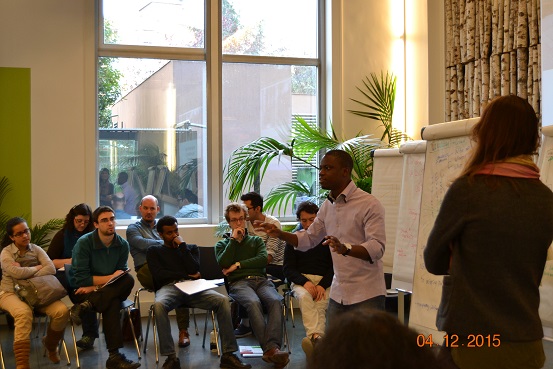-
About
- Our Work
- Get Involved
- Stay Updated
Young people constitute an important share of the population in developing countries, especially, in Africa where the estimated median age is under 19. Africa’s young population is not only growing rapidly, it is also getting better educated. Based on current trends, it is projected that over 137 million of the youth will have a minimum of secondary school education by 2030. Unfortunately, employment opportunities for this teeming educated young men and women are woefully inadequate. Strangely, this story of Africa’s worrisome youth unemployment is often told alongside the stories of the continent’s fast and steady economic growth.
While the situation poses a significant challenge to the sustainability of the current growth trends, it offers an unrivalled opportunity for economic and social development if the talents of this swiftly increasing reservoir of human capital are harnessed and channelled towards the productive sectors of the economy. While it is no longer news that developing agriculture along the value chain is an important factor to consider in creating employment, improving incomes and reducing hunger and poverty, the urgent need for youth inclusion in agriculture is now more pressing than ever.
Youth in Africa are helping in introducing new technologies especially ICTs in several domains of agriculture while also, learning from traditional methods, thereby providing the potentials of fusing the best of both worlds. This reality has led to the renewed drive for the inclusion of youth in the activities of CORAF/WECARD right in the planning stages of the project. This drive for an all-inclusive agricultural research and development hinges on CORAF/WECARD’s second operational plan on up and out scaling of scientifically proven technologies and innovations and is currently gaining momentum as the future of agriculture, food, health and nutrition security in Africa largely depend on the engagements and investments all relevant stakeholders including youths.
This in line with the five key results of the GCARD3 is in fact, the underlying basics of CORAF/WECARD’s activities where we utilize Innovation Platforms (IPs) as a tool for coordinating climate smart agricultural research across West and Central Africa.
Youths now, more than ever have demonstrated immense ability in adapting to and mitigating the effects of poverty, hunger and nutritional insecurity etc. They are creating positive changes in their communities and around the world - as with youth, comes energy, innovation, and optimism.
It is imperative for governments and all other relevant development partners to join hands in activating consistent strategies that will guarantee an increase in the profitability of the agricultural sector and employment creation through improved productivity, market intelligence and the establishment of rural industries.
Young people represent the promise of changing societies for the better. Organisations like GCARD and CORAF/WECARD have got the train of youth in agriculture moving and like Jhannel Tomlinson said, “It’s high time you get on the train”.
This blog post is part of the GCARD3 Youth blogpost applications. The content, structure and grammar is at the discretion of the author only.
Picture credit: Tamanda Chabvuta . Paul during the Youth-In-Landscapes workshop 2015
About the author
Related Posts
Comments
No comments made yet. Be the first to submit a commentBy accepting you will be accessing a service provided by a third-party external to https://archive.ypard.net/
Get in touch
Email: [email protected]
YPARD Global Coordination UnitHosted by AGRIDEA and the Czech University of Life Sciences Prague
Lausanne, Switzerland and Prague, Czech Republic - Our Work


